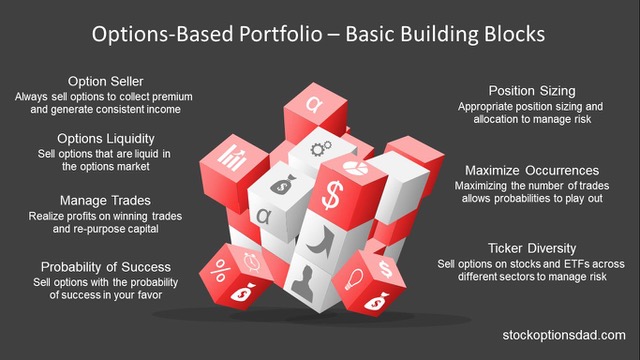How can you effectively run an options-based portfolio when trading with a small account? For example, how can you trade options on stocks like Tesla (TSLA), Ulta Beauty (ULTA), Apple (AAPL), Disney (DIS), Facebook (FB), etc., that possess such a high price per share when account balances are limited? People often shy away from options trading due to low account balances. However, limited capital doesn’t preclude you from trading, and in fact, you can run an effective options portfolio regardless of account size. Options enable you to leverage a minimal amount of capital, which opens the door to trading virtually any stock, all while defining your risk.
Over the past 13 months, ~315 trades have been made with a win rate of 86% and a premium capture of 57% across 69 different tickers. When stacked up against the S&P 500, an options strategy generated a return of 9.1% compared to the S&P 500 index, which returned 3.7% over the same period. These returns demonstrate the resilience of this high probability options trading in both bear and bull markets. Moreover, these results can be replicated irrespective of account size when following the fundamentals outlined below.
Myth Busting Small Account Limitations
Options can be leveraged, using small amounts of capital to trade what otherwise would require much greater capital requirements. How is this possible? It’s possible because options can be traded in a risk-defined manner. Therefore, entering any options trade, the required capital equals the maximum loss while the maximum gain equals the option premium income received. Since the risk-defined approach has a max loss, the required capital is equivalent to the max loss. The maximum loss value only needs to be covered by the available account balance. The aggregate price of the underlying shares within an option contract (contracts trade in 100 share blocks) is irrelevant.
The overall options-based portfolio strategy is to sell options that enable you to collect premium income in a high-probability manner while generating consistent income for steady portfolio appreciation regardless of market conditions. This is all done without predicting which way the market will move since options are a bet on where stocks won’t go, not where they will go. This options-based approach provides a margin of safety, mitigates drastic market moves, and contains portfolio volatility. This strategy is agnostic to account balance and applies to accounts of all sizes. Continue reading "How To Trade Options In Small Accounts"

